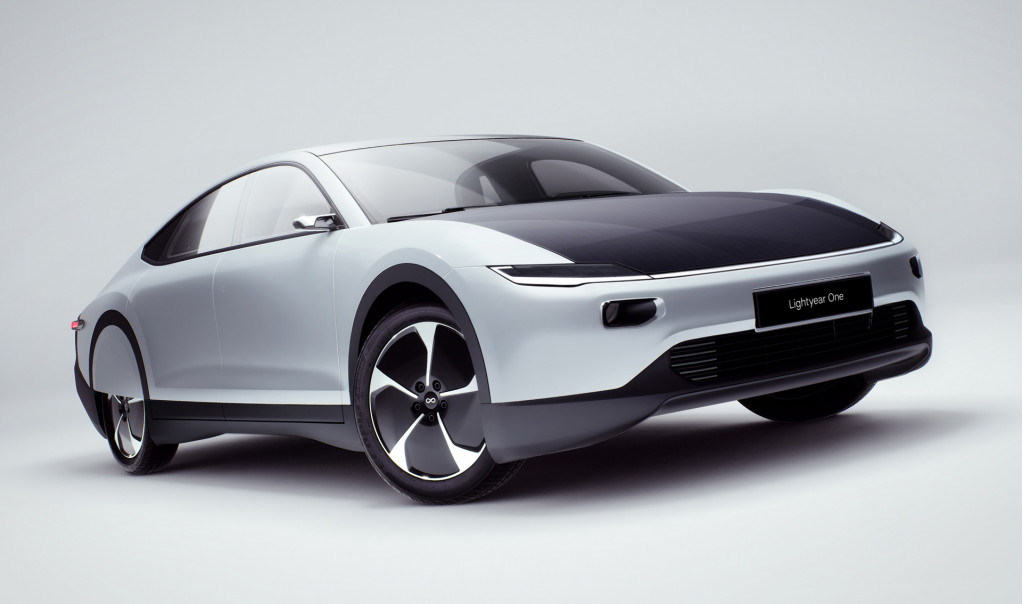Dutch startup Lightyear has secured a supplier for its long-range electric car's solar roof. Royal DSM will partner with Lightyear to scale up production of the roof system.
The two companies will also look into solar-roof applications for other cars, as well as vans and buses, Lightyear said in a press release Thursday.
The roof consists of 53 square feet of solar cells protected by double-curved safety glass. Royal DSM will supply a back sheet that moves electrical connections behind the cells, freeing up more space for capturing sunlight. This will also reduce electrical losses, leading to a 3% gain in power output over other designs, the company claims.
Lightyear was founded by members of a winning World Solar Challenge team, with the goal of applying solar technology to production electric cars.

Lightyear One
The Lightyear One electric car is aiming for 450 miles of range on the European WLTP cycle (which tends to be more optimistic than the U.S. EPA testing cycle). While the car does have a battery pack, as well as aerodynamic bodywork, it is designed to rely heavily on the solar roof to achieve that range.
With the car's optimized design, a solar roof can cover 70% to 90% of annual mileage, Lightyear said. The company is ramping up solar-enabled range to allow drivers to "leapfrog the grid" by relying less on charging infrastructure.
An estimated 0-62-mph acceleration in the 10-second range underscores that the Lightyear One emphasizes efficiency over performance. Affordability doesn't seem to be a priority either: Lightyear previously quoted a base price of $135,000 for the One, which is schedule to launch in 2021.
So far our real-world experience with solar roof systems has been underwhelming—although the system in the 2020 Hyundai Sonata Hybrid can boost mileage slightly and provide, Hyundai claims, 700 electric miles per year.












